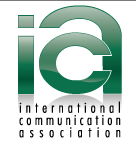 I’m proud to be a member of the International Communication Association’s Children, Adolescents and the Media Division. Our brilliant leader, Dr. Amy Jordan, today announced that six categories of interest seem to have emerged among members’ proposals for a preconference or extended session on teaching children and media at ICA’s annual conference in London 2013. These are listed below in no particular order:
I’m proud to be a member of the International Communication Association’s Children, Adolescents and the Media Division. Our brilliant leader, Dr. Amy Jordan, today announced that six categories of interest seem to have emerged among members’ proposals for a preconference or extended session on teaching children and media at ICA’s annual conference in London 2013. These are listed below in no particular order:
1. Structuring the Children and Media Class
2. Creating Meaningful Assignments
3. Incorporating Examples into Class Lectures
4. Teaching and Using Theory
5. Public Policy and the Child Audience
6. Supervising Research
To join my colleagues at the preconference, let alone share my knowledge directly with them, is an incredible opportunity. As I scanned the topics and considered my expertise, Topic 2, Creating Meaningful Assignments, jumped out at me. This, I realized, is my sweet spot. So I emailed the following proposal to Amy:
A meaningful assignment is grounded in a meaningful learning experience overall. We can’t just drop a gem of an assignment from on high, when the rest of the course has been stultifying, and expect stellar outcomes. No matter how well-designed the assignment, it has to be embedded in a framework of trust and energized inquiry. Then, this assignment must be sensitively evaluated or it will undermine the philosophy of the practice and value of the experience. Thus, I will begin by zooming out to the course level, then drilling down to discrete assignment creation and assessment.
In terms of information, I would explore the dynamics of participatory culture (Jenkins, Purushotma, Clinton, Weigel & Robison, 2006) in order to clarify what it takes for instructors to engage learners in and out of the classroom, as well as prepare them for 21st century demands. Then I would introduce the five characteristics of participatory learning (as identified by the USC PLAY! research group): relevance; motivation and engagement; creativity; co-learning; and ecosystemic learning. I believe that these are the constructs of “meaningfulness,” should one choose to operationalize the term. To enhance meaningfulness, instructors also should allow for their students to co-construct the assignment themselves; this helps to ensure that students derive benefit from the fruits of their labors, and boosts students’ sense of ownership in the material they explore and knowledge they create. When it comes time to assess, I would touch upon participatory action research (PAR) and help instructors and students alike to recognize cultural beacons (Dura, Felt, & Singhal, in press), which are overlooked indicators and grassroots epistemologies.
In terms of process, I would practice what I preach, modeling an interactive, participatory approach to sharing and constructing knowledge. I would utilize several Liberating Structures (McCandless & Lipmanowicz, in press), such as 1-2-4-All and Impromptu Networking, in order to facilitate the establishment of a participatory classroom culture. I would also co-construct a curriculum design assignment with learners, requesting that they post to a wiki that I had set up in advance, in order to help them get going with this project and co-create a dialogic community of practice.
I’m keeping my fingers crossed and hoping that I can share these passionately-held beliefs/evidence-based recommendations with my peers in London. Tally ho!

